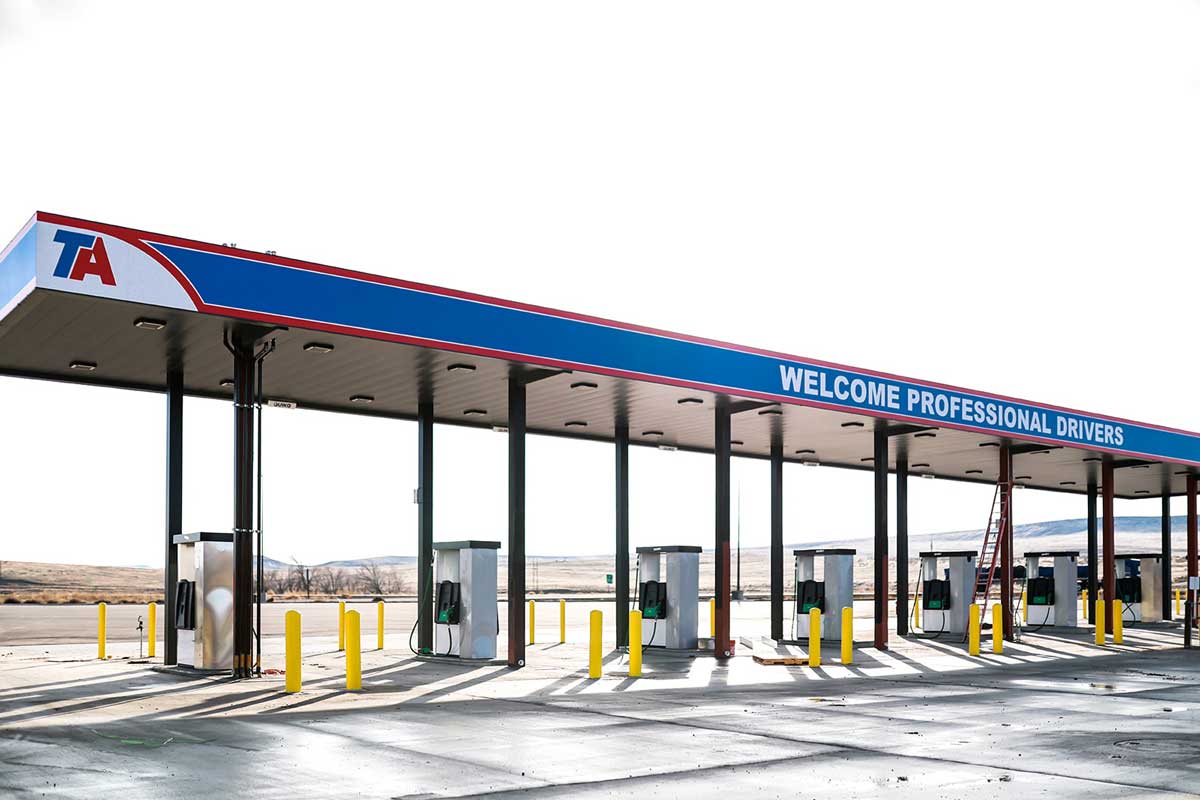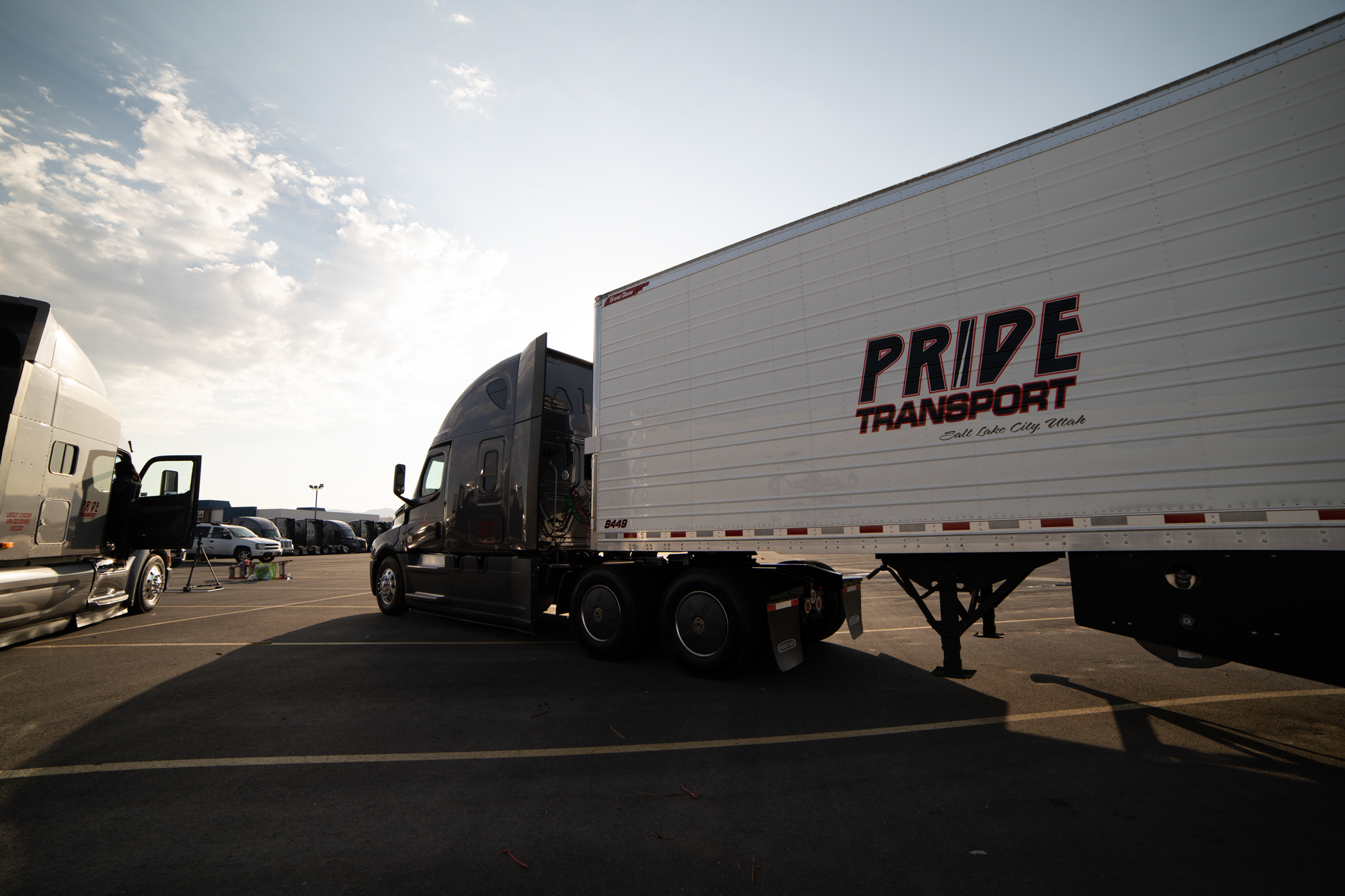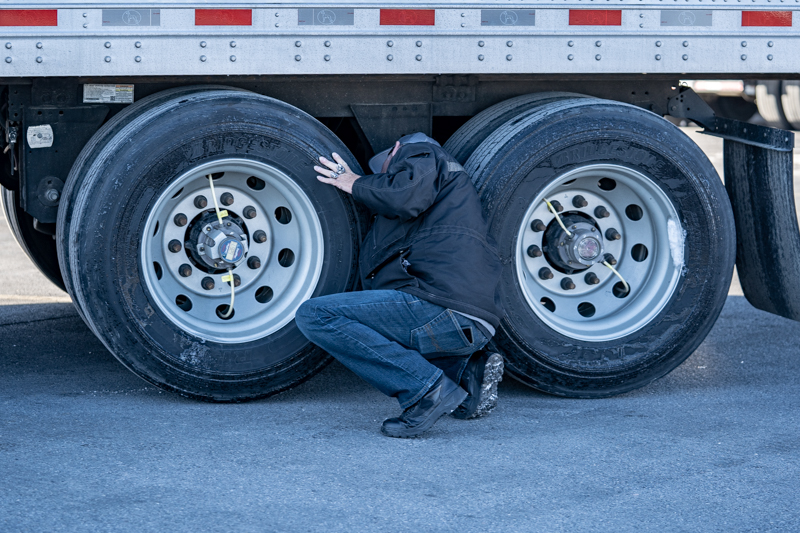by Pride Transport | Sep 21, 2021
Being a professional truck driver is more than just a job—it’s a lifestyle. Drivers can be on the road for days, weeks, or even months, so pulling over at truck stops is virtually inevitable. If this is your first truck driving job, navigating that sort of environment can be confusing, and you might find yourself considering what sort of behavior is acceptable at truck stops. It’s not uncommon to have some questions about the setting: Is it acceptable to park at a fuel station? Should I help someone trying to back their truck in? What should I do to stay safe?
Whether you’re a greenhorn or experienced driver, there are several etiquettes or golden rules you should know about. These tips give drivers guidelines on how to act while staying out of the way of others, how to stay safe while on the road, and what it takes to live a trucking lifestyle.
Here are the top seven truck stop etiquettes you should know about:
Tip 1: Fuel Islands Are for Fueling, Not 30-Minute Breaks

When you’re driving, every minute counts. The last thing you want to do is wait in line while a driver is taking their 30-minute break at the fuel stop. So, repeat after me: fuel islands are meant for fueling only! If you need to do anything other than fueling, like buying snacks or using the restroom, move your truck to an actual parking spot.
This issue has become so common that some truck stops even have a policy of booting and fining non-fueling trucks parked at fuel pumps. So, unless you want to be the person that inconveniences or upsets other drivers, don’t park your truck at a fuel stop if you’re on your 30-minute break.
Tip 2: Park Properly
To find a good parking spot, you might have to stop earlier in the night before other drivers arrive. Find a spot away from where trucks are entering or exiting the lot, and far away from fuel pumps. Do I sound like a broken record yet? That goes for scales, too. Most importantly, be respectful and keep your truck fully inside your parking space so other drivers can easily park next to you.
Tip 3: Help Keep Restrooms and Showers Clean
Restrooms and showers are essential while driving on the road. Newer drivers may not know this, but truck stop showers are similar to the ones you may find at a hotel. The restrooms are usually sectioned off into a bathroom and shower section. The bathroom side will usually have a toilet, sink, mirror, blow dryer, and hooks.
For the most part, they’re kept clean. Help keep them this way by picking up after yourself. You wouldn’t want to use dirty restrooms or showers and other drivers wouldn’t either.
Tip 4: Drive Slowly into the Lot
Drive carefully and proceed with caution as you pull into a truck stop. At night, some truck stops have poor lighting so you might not be able to see someone walking or driving. Avoid accidents by driving slowly, keeping your distance, and being aware of your blind spots.
Tip 5: Take Pride in How You Look

As the saying goes, first impressions are important. And at some point, you’ll probably need to get out of your truck and talk to other people. While not every company requires drivers to wear uniforms, most companies have a certain dress code employees must follow. It’s always good practice to make sure your uniform is clean and that you look presentable. Take pride in how you look and present yourself professionally.
Don’t forget about the appearance of your truck, too. It should look clean, both inside and out. A clean truck helps keep you safe by showing others that you take your job seriously.
Tip 6: Be Polite–It’s Okay to Say Hello
The general rule for approaching other drivers is to make eye contact and wait for them to acknowledge you. If you can’t see a driver in their truck, it could mean they’re sleeping or don’t want to be bothered. Unless it’s an emergency, respect drivers and don’t knock on their doors, as you could wake them up. Most drivers are willing to help each other out—just be polite and keep in mind that others might be really tired or sleepy.
Offer to help less experienced drivers if you see they’re having trouble. And don’t be afraid to say hello to other drivers—the simple gesture could help brighten their day!
Tip 7: Complete Your Pre-Trip Inspection

It is probably worth mentioning that a pre-trip inspection is required at the start of every shift. Remember to check your tires, fifth wheel, reefer unit, fluid levels, leaks, clutch, ball joints, shock absorbers, kingpins, lights, and gauges. Not only are pre-trip inspections required by employers, they’re also important for your own safety and the safety of other drivers on the road. Also, a law enforcement officer or Department of Transportation (DOT) inspector can give you a fine for failing to complete the pre-trip inspection.
While there’s no required amount of time or standard to complete a pre-trip inspection, an average inspection should take about 15 to 20 minutes. Don’t cut corners or try to rush through the inspection–it’s important to take your time to inspect your truck now rather than risk a breakdown while you’re on the road. Each company and state has their own checklist and safety process that complies with the Federal Motor Carrier and Safety Administration (FMCSA) guidelines. Make sure you are familiar with your company’s and state’s pre-trip guidelines.
The takeaway here? Use your common sense at truck stops. By keeping clean, being polite, and generally considering the space others need at each location, you’re setting yourself up for ease of travel and easy communication with your peers.
If you’re an experienced driver and see a piece of etiquette that we’ve missed, please let us know. While you’re at it, take a look at all the professional CDL jobs we have available or call 800-Go-Pride to speak to a recruiter.